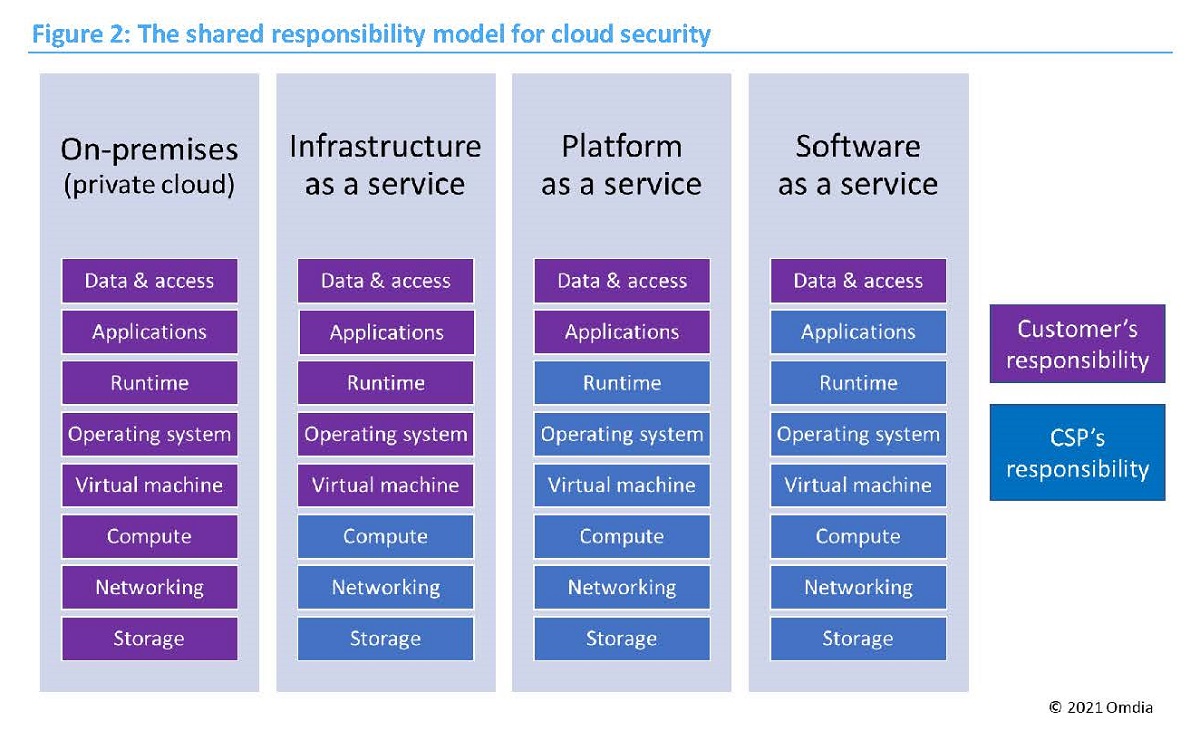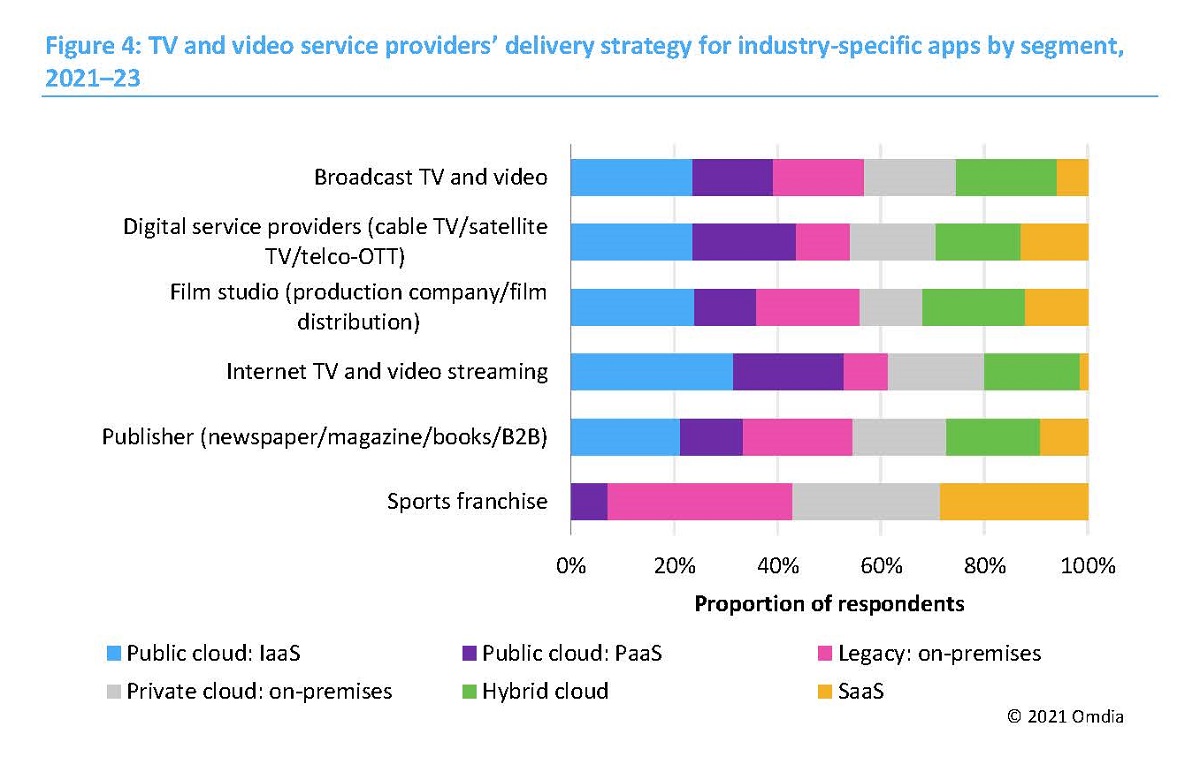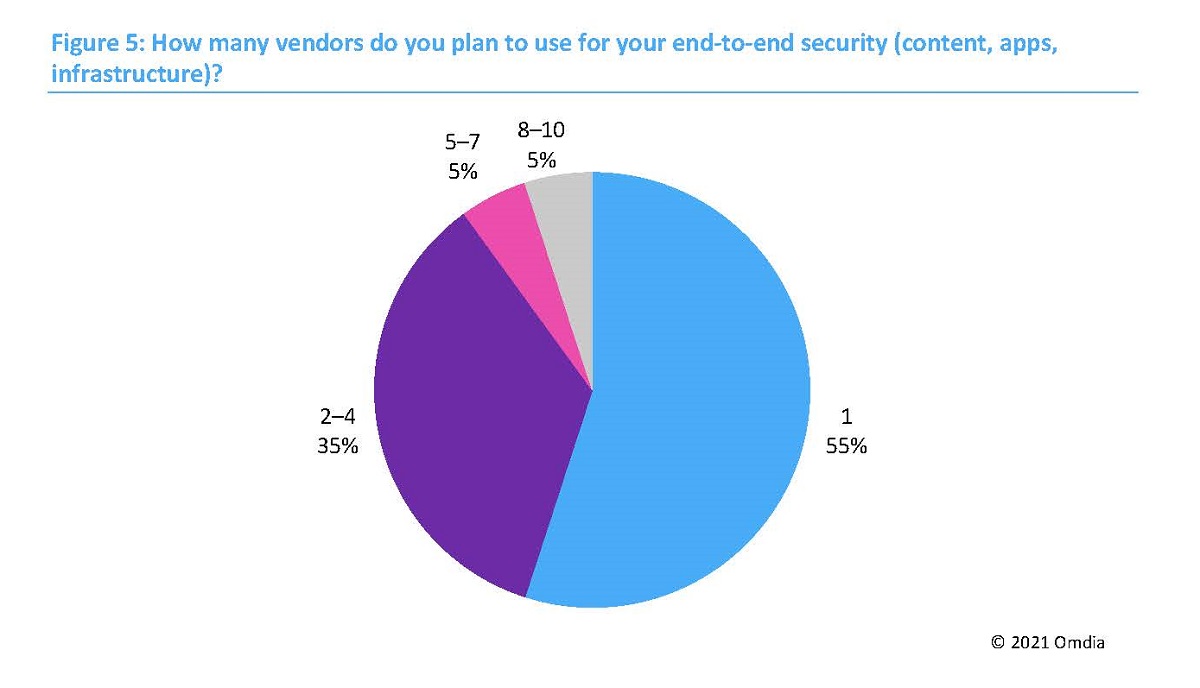
Over the last decade, cloud computing has evolved from a significant new method of provisioning enterprise technology to a cornerstone of delivering IT functionality and content. The technology is moving at pace taking business models with it. If most companies today straddle an on-premise into cloud hybrid position a move to a hybrid multicloud scenario is deemed inevitable in the long run by Verimatrix.
The specialist content security company backs up its findings in a new white paper, “Ahead in the Cloud,” written by researchers Omdia.
Growth of SaaS, IaaS, PaaS
If cloud computing has gone mainstream, here’s what you need to know.
There are three widely used categories for discussing cloud services:
- Infrastructure as a service (IaaS), which delivers infrastructure components such as compute, network, storage, and virtualization as services
- Platform as a service (PaaS), which in addition to the IaaS layers, also provides an application development environment via an application programming interface (API) for developers to write to before they deploy their apps onto the platform
- Software as a service (SaaS), in which the entire application stack, including the application itself, is delivered as a service

This ease of adoption has made SaaS “the early breakout star” of cloud computing, and it remains a mainstay of the overall market, according to the report.
Omdia estimates that spending on SaaS services totaled $58 billion in the first half of 2020, a 28% increase on the same period in 2019.
Extrapolate that growth rate through the end of the year (which seems reasonable given the uptick in demand for cloud services as a result of the coronavirus pandemic), and Omdia says the SaaS market was worth around $125 billion for 2020.
At the other end of the spectrum, IaaS requires most effort from the enterprise customer, which becomes responsible for everything from the operating system on which the application will run, through the app itself, up to and including the data.
“AWS excels in the breadth and depth of its services, while Microsoft’s dominance in office productivity makes it a favored destination for certain types of workload, and Google’s strength in AI gives it an edge for any analytical application leveraging AI. Such multicloud environments are also quite often hybrid, with at least some functionality still residing on the customer’s premises.”
— Verimatrix
“IaaS adoption is therefore a weightier undertaking, requiring a higher degree of confidence on the part of an enterprise, and for this reason, its growth has been a more recent phenomenon as companies’ comfort levels have risen.”
That said, IaaS offers the enterprise customer considerably more control and freedom of movement than SaaS does, and for this reason it has now grown to be the largest segment of the market.
Omdia estimates that it was worth $64 billion in the first half of 2020 and extrapolates that to $138 billion for the entire year.

PaaS, meanwhile, can be thought of as a halfway house between the other two, affording more control over the application than SaaS but with less of the heavy lifting required for IaaS. Here, the cloud service provider (CSP) is responsible for the underlying runtime environment and OS.
Omdia’s numbers for the first half of last year put the PaaS market at $32 billion, which it extrapolates to $71 billion for all of 2020. By this calculation, PaaS grew 39% in 2020, compared to IaaS’s 32% and SaaS’s 28%.
“PaaS is clearly proving to be the most popular delivery mode for cloud computing of late, enjoying the fastest growth rate overall,” states the report.
Hybrid Cloud to Hybrid Multicloud
Omdia’s separate ICT Enterprise Insights survey for 2020/21 highlighted that almost 18% of industry-specific applications — such as multiplatform engagement and enterprise apps such as media asset management, playout, and multiplatform — will be moved to hybrid cloud in 2021.
However, the trend is toward hosting applications both on-premise and in multicloud, where media companies can take advantage of the strengths of major CSPs.

Per Verimatrix/Omdia: “AWS excels in the breadth and depth of its services, while Microsoft’s dominance in office productivity makes it a favored destination for certain types of workload, and Google’s strength in AI gives it an edge for any analytical application leveraging AI. Such multicloud environments are also quite often hybrid, with at least some functionality still residing on the customer’s premises.”
The white paper continues: “Since most M&E enterprises have invested heavily in on-premises infrastructure, writing off such investments will not be feasible in the short term. [Therefore] the most likely scenario for the immediate future is the development of hybrid multicloud infrastructures, with some functionality remaining on the provider’s premises while other parts move into the cloud, that is, some combination of public cloud/IaaS or PaaS, on-premises, and SaaS.”

Security Remains a Complex Issue
The white paper underscores the benefits of moving to cloud all of which are well rehearsed for those involved in M&E tech. It includes the ability to scale infrastructure up and down according to business demand; the related cost efficiencies of running on operational expenditure rather than loading costs up front with capex; and faster upgrades to (software) equipment and the ability to customize applications at speed.
Where Verimatrix wants to focus is on security, which is its own specialization. The company believes that each form of cloud computing and/or mix of on-premise computing presents its own type of risk.
“The on-premises private cloud variant, for instance, may look more secure because it is completely under the control of enterprise from the physical data center all the way up the stack to the data/content. However, if an enterprise suffers a supply chain breach along the lines of the now infamous SolarWinds attack made public in December 2020, being on-premises or in the cloud will make little difference, because resources in both those environments were compromised.

“Equally… there is scant evidence to suggest that one [cloud platform] is noticeably more insecure than another.
Yet as the hybrid multicloud approach to delivery becomes the norm across M&E sector enterprises “will need to deploy security tools that can not only scale during times of peak activity but ideally also span the different cloud and on-premises environments that make up the customer’s hybrid infrastructure. This will be fundamental if a company is to gain an enterprisewide view of its attack surface and take remedial action across its infrastructure.”
Naturally, Verimatrix has content protection solutions for this.
Security, and especially content protection has been at the center of media enterprises’ business priorities for decades. Omdia’s ICTEI survey 2020/21 highlighted that end-to-end premium content protection is one of the top three business priorities for 37% of media enterprises globally in the next 18–24 months. Almost the same proportion (34%) stated that application security is fast becoming one of their key investment areas over the next two to three years.

